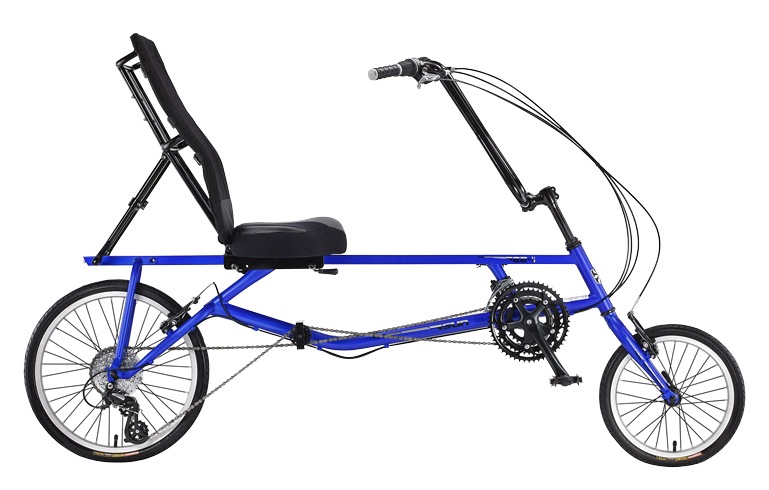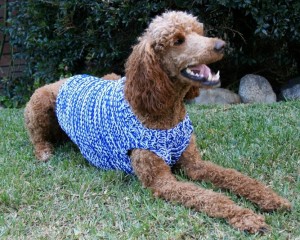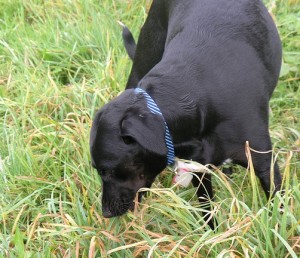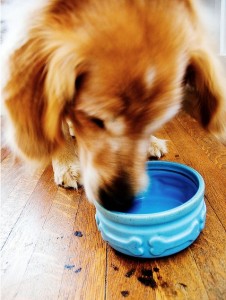I don’t know about you, but I’m always looking for ways for my dogs to get exercise. I’m a firm believer that “a tired dog is a happy dog.” I don’t get the opportunity to get them as worn out as I’d like every day, but regular exercise is key to a sound mind and body.
I walk my dogs daily, but there is nothing like a good run to get the kinks out. Since I’m not a runner or a rollerblader, the next best thing for me is a bicycle.
The problem with running a dog alongside a bike is the unsteadiness of it all if the dog decides to stop suddenly or head in the other direction. Personally, I like to be able to keep both hands gripping the handlebars, not just one. Plus, I have two dogs to exercise, which increases the odds one of us will end up tangled in the spokes.
I decided I need to find some other kind of cycle, one that would allow for more stability and would allow me to be closer to the dogs level so I could keep an eye on them more easily. I wanted to know if my dogs were eager to run faster or if they were falling behind, or if they got something stuck in their paw and were limping.
 After looking online I found a number of sites that featured some kind of contraption that would allow the dogs to pull you along, but I wanted to actually get some exercise in the bargain, and decided that wasn’t for me.
After looking online I found a number of sites that featured some kind of contraption that would allow the dogs to pull you along, but I wanted to actually get some exercise in the bargain, and decided that wasn’t for me.
This led me to start researching adult tricycles. There were quite a few out there, and Wal-Mart even sold one, but in my reading it seemed that the regular trikes weren’t that great at going around corners. Plus, I wanted to ride a bit lower down.
This narrowed the field considerably, and I ended up researching recumbent trikes. Some of them have you super close to the ground, which isn’t what I wanted. Seemed too much like lying down to me, which would make it harder to see what was going on around you. No, I wanted to be higher than that. Luckily, someone else thought this was a good idea, and I ended up on the website of a company named Sun Bicycles.
I really wanted to try one out, but none of the local bike shops carried any. So basically I had to buy one sight unseen and hope for the best. I wasn’t ready to plunk down $900 for something I just thought would work in theory, and so decided research rental options.
As it turns out, Venice Beach is filled with bicycle rental shops, and I was able to track down a place that rented recumbent trikes. Woo Hoo! We packed up the car with my pooches and headed to the sand. My boyfriend and I each took one dog, and set off down the crowded sidewalk. Felt funny at first but the dogs took to it right away and I know I had a winner of a plan.
It was easy to pedal, felt super comfortable, and the dogs loved it. I got to watch them trot along, eyes glittering, tongues out, wind in their hair. They looked great and we all had a blast. That settled it. I would get my own trike.
I contacted Sun Bicycles and they gave me a list of local bike shops that would assemble it for me. The next thing was to figure out how to attach the dogs to the bike. I bought a metal spring-loaded contraption that attached to the frame of the bike, but this didn’t last long as we could never get it tight enough to where it wouldn’t start moving out of place. Besides, it was too rigid and didn’t allow enough movement for the dog.
Turns out all I needed was a good harness (I like the Easy Walk Harnass, which I turn around for trike rides so the clip area is between their shoulders) and a stretchy leash, and I was able to find a heavy duty model on Amazon.com that worked like a charm. The trick was to tie it far enough back (I now keep it attached it behind my seat) so the dogs can’t cross in front of the front tire. It’s just long enough so that I can have both dogs on my right side, but short enough that they can’t get too far away. Perfect!
Now I’m able to ride around the neighborhood with my dogs and not worry about tipping over if they decide to stop suddenly—I just feel a gentle tug. An added benefit is that my elbows don’t hurt riding my trike the way they would on a bike. It’s like sitting in a chair. Your upper body can be totally relaxed, but your legs still have to a little extra work as you don’t have the ability to sit up in your seat and use your weight on the pedals. That’s okay by me. My legs will just be in better shape.
I avoid busy streets for safety reasons, and choose the quietest streets possible because it makes for a more enjoyable ride. An added bonus, is that everybody who sees us does a double take and gives me a big grin and a thumbs up. “Now that’s the way to do it!” they say. “Where can I get one?”
To see my trike in action, watch this short video of us heading up my street.
If you decide you’d like a trike, too, I’d recommend getting a side mirror so you can see cars coming up from behind, a light for when it starts getting dark, a reflector for the back, a bell so you can alert people you are nearby, and an orange flag so you are very visible. Although they don’t sell Sun Trikes on Amazon, there are a number of other less expensive models to choose from, some of which I’ve posted in the left column.
Photo Credit: Scott Mucci (top) and Richard Masoner





